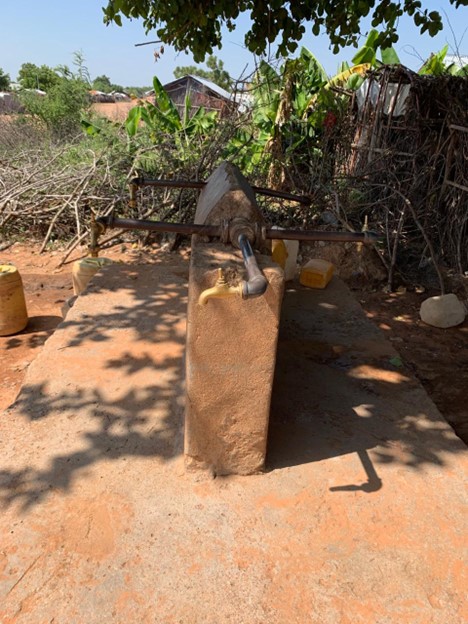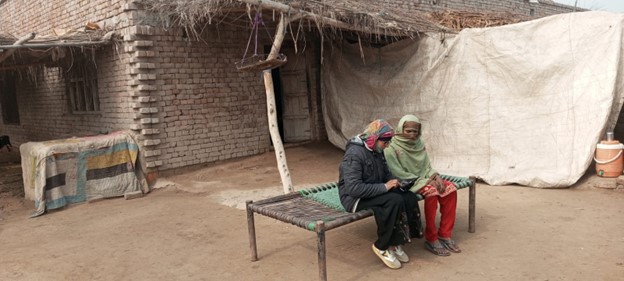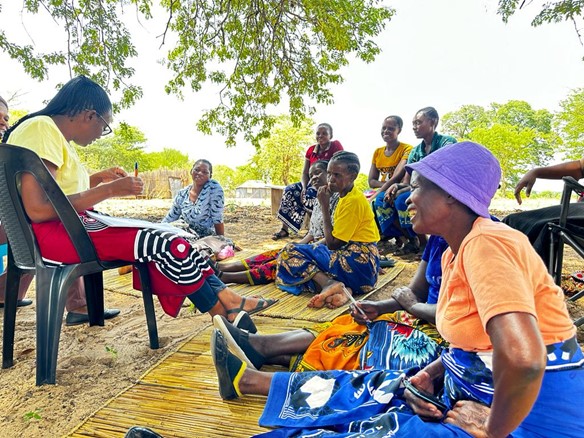
This International Women’s Day, we are looking at gender challenges and solutions for designing anticipatory action approaches in refugee and internally displaced persons hosting communities.
This year, the United Nation’s theme for International Women’s Day is ‘Invest in women: Accelerate progress’, a theme that aims to expose barriers to gender equality and explore gender-responsive opportunities to secure a better future for all. Research shows that in a disaster, women are 14 times more likely to die than men, often because they have less access to extreme weather-related information and fewer resources to respond appropriately to disasters. In 2022, the UN Secretary-General, António Guterres, declared the need for “Early warnings for all.” This declaration highlights the need to tackle disaster-related loss and damage to ensure that everyone on Earth is protected from hazardous weather, water, or climate events. As we seek to safeguard global communities it is imperative that anticipatory action (AA) strategies are designed and implemented to ensure early warnings and long-term adaptation solutions for all genders. Given the elevated risk that women face in times of disaster, mainstreaming gender as an element of anticipatory action is vital.
What is anticipatory action?
AA are actions taken to prevent or mitigate potential disaster impacts before a shock or before acute impacts are felt. This approach is increasingly recognized as an essential part of the solution to reduce the impact of climate change and extreme weather events, especially for vulnerable groups, such as forcibly displaced women and girls. AA may include triggers for action, pre-agreed activities, pre-committed funding, early warning signs, and provision of humanitarian aid before disaster strikes. Communities hosting refugees and internally displaced persons (IDPs) present challenges for AA as these communities have a complex set of gendered vulnerabilities and needs.
To better understand the gender-related challenges facing at-risk communities, CGIAR’s Fragility, Conflict, and Migration (FCM) Initiative conducted research on water and climate-related vulnerabilities in refugee and IDP-hosting communities in Ethiopia, Pakistan, Zambia, and Jordan. The following are the main gender challenges affecting disaster preparedness and response in the case study communities.
Somali Region, Ethiopia
In the Somali region of Ethiopia, the population of refugee and host communities has increased over the past decade, increasing pressure on the region’s infrastructure, including its water, sanitation, and hygiene (WASH) systems. One of the sanitation-related gender issues is that host and refugee settlements do not have enough latrines, with the existing latrines frequently damaged during extreme weather events like floods. As a result, access and use of latrines is greatly diminished. In addition, latrines are not sex-segregated and do not provide privacy and safety for women and girls. This is one of the factors that heightens the security risks for already vulnerable women and girls when they access WASH services and can lead to an increase in gender-based violence (GBV).

Punjab Region, Pakistan
IWMI researchers found that digital media in Pakistan has the potential to play a critical role in enhancing community resilience against various disasters such as floods and droughts. However, there exists a significant gender gap in access to information. In Rahim Yar Khan, a disaster-impacted district in Punjab, Pakistan, women and young girls are often prohibited from owning mobile phones, and there is restricted access to the internet and social media often due to cultural norms. During surveys, women who have migrated in part due to climate impacts have expressed the nature of the challenges they face, with one woman stating, “My husband passed away, and I am now responsible for running the household, yet I do not own a mobile phone. We only have a simple button phone, which my son possesses. It’s frowned upon in our area for women to have mobile phones. If I need to make a call, I must borrow the phone from my son.”

Sesheke District, Western Province of Zambia
The patrilineal organization of some Zambian provinces means there is a lack of women in decision-making positions. However, when disaster strikes, it is the women in the community who migrate in search of work that can support their families. This has a significant impact on women’s access to information and ability to make decisions during emergencies and disaster situations. IWMI organized focus groups in the Sesheke District, Western Province of Zambia, where women from the Mbao community discussed the 2019-2020 Zambian drought. They complained that during this disaster, men sat at home while they were forced to migrate to Namibia in search of work that would allow them to feed their families. As one woman said, “The work in Namibia was tough. We were ill-treated there, sometimes when you finish the work, they wouldn’t even pay you. You come back home to find the husband is just drinking and womanizing.”
Ironically, while women were forced to bear the brunt of the drought’s devastating effects it was the men who stayed behind who occupied key decision-making positions and possessed the power to determine disaster response. In this case, opportunities are needed for women to participate actively in preparedness activities, ensuring their voices are heard, and addressing the structural barriers that limit their involvement.

The way forward in making anticipatory action gender inclusive
There is an urgent need to recognize the gendered nature of vulnerabilities, the differential power dynamics, and norms and cultural practices that represent barriers to women’s safety in disaster scenarios. Each of these challenges restricts women from decision-making, prevents access to technology and information, and increases vulnerability to GBV. In response, we must:
- Think innovatively about the approaches to gender sensitivity and inclusion in AA design.
- Obtain and analyze gender and sex-data to better understand how women and girls are affected by disaster and design AA approaches that serve the whole community.
- Ensure that AA implementation is sensitive to the local cultural norms around gender and does not unintentionally reinforce gender inequalities or cause harm to already vulnerable groups.
An IWMI Issue Brief co-produced by the FCM Initiative and the CGIAR Gender Equality Initiative will be published next month, further expanding on these questions and offering guidance for AA researchers and practitioners on gender inclusivity.
As we celebrate International Women’s Day, we recognize that accelerating progress toward gender equality demands that we invest in gender-responsive solutions to benefit society. The FCM Initiative plays a key role by generating evidence on the vulnerabilities of forcibly displaced women and girls in fragile and conflict-affected areas. The data discussed in this blog will be used, in partnership with local stakeholders, to promote gender equality in AA approaches and reduce the impacts of climate change and extreme weather events for entire communities.
Written by Alexandra Schindler, Consultant, IWMI and Everisto Mapedza, Senior Researcher, IWMI.
We would like to gratefully acknowledge the women who generously shared their stories with IWMI researchers, as well as Radhika Singh (Ethiopia), Sidra Khalid (Pakistan), and Ngowenani Nohayi, Winnie Kasoma Pele, and Munyaradzi Mutenje (Zambia) for providing research data and guidance for this blog.
This article first appeared on the IWMI blog. or more information on IWMI’s work within the FCM initiative contact Sandra Ruckstuhl (s.ruckstuhl@cgiar.org).
Top Photo: Eris Owiti at her climate-smart demonstration plot for women. Photo: C.Schubert/CCAFS



